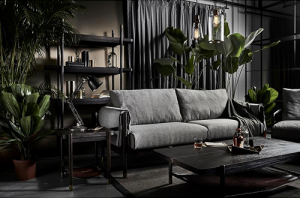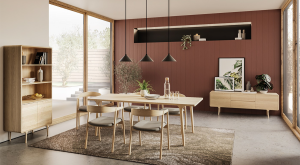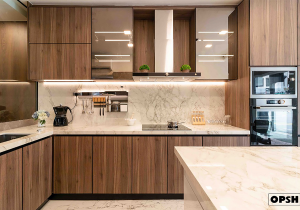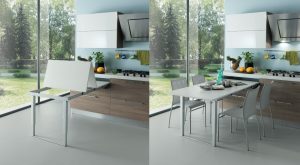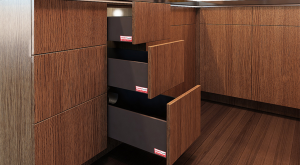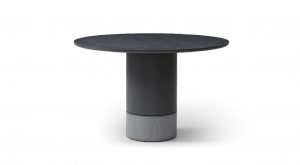When Two Worlds Touch: Sumphat Gallery’s Rush Gaspard Pleansuk and Philippe Moisan
In Thai, the word ‘sumphat’ means ‘touch’. For Sumphat Gallery’s founders Thai architect and designer Rush Gaspard Pleansuk and French photographer Philippe Moisan, this touch might refer to the coming together of their two cultures, or the inviting tactility of the brand’s creations. Sumphat Gallery collaborates with local craft communities to shape a contemporary luxury aesthetic that celebrates nature and the humble stories behind traditional craft. In doing so, this Bangkok-based brand breathes new life into age-old handcrafting techniques. We speak to Rush Gaspard Pleansuk to find out more.

How did you two meet?
We met during Philippe’s photography trip to Thailand. Philippe is an art photographer and I was consulting and designing for a wood furniture company at the time.
What sparked the decision to build Sumphat Gallery together?
When our relationship began to settle, we sought work that was suitable for both our professions. Philippe’s photographic work requires him to take trips to remote areas. Therefore, I decide to start our studio in order to work with people based out in the rural areas where Philippe would also have subject matter for his work.
What do you take inspiration from when designing pieces for Sumphat?
The inspiration comes from the story. When we meet the craftsmen, we ask them to share about the stories of their craft and traditions. The story is the important part that links people together. They are what forms our culture. This is the source that determines our work.
Could you tell us more about one iconic piece of Sumphat design and share a little about the craftsmanship behind it?
I would talk about the object that represents us the most. The Kendi Teaset was a project that we developed during our field work in the Sukhothai province with the Thai Institute for Small and Medium Enterprises Development (ISMED). Sukhothai was an old 8-14th century kingdom which exported pottery around the world back when China was struggling with war. We used the earth from that region as a nod to their ceramic tradition.

After we found the suitable material to tell the story, we looked for the form. We were interested in the form of the Kendi water container, which was first found in India 5000 years ago. This container has a long neck that functions as a handle instead of the ear that today’s standard teapot forms have. It is used to tip the teapot, and it is also the feet that the teapot stands on.
The Kendi Teaset is notable because we work with more than one village to create this collection. In addition to the ceramic element, we also met with craftsmen from the south of Thailand who are skilled in fine basket bamboo weaving. We invited them to create a very small basket that is used as a filter for tea leaves. This product is a combination of different skills, and brings together the craft and histories of different regions to coexist within a single collection.
What kinds of traditional craftsmanship techniques does Sumphat Gallery specialise in working with?
You might say that we are interested in all types of craft. We work with more than 10 different villages to protect knowledge that is on the edge of becoming lost. Our work is to discover hidden craft knowledge and use them as mediums to produce objects that are suitable for today’s contemporary lifestyles.
Are there heritage techniques that you have yet to work with, but are looking forward to?
I am still curious about what is called “Inn Wa glass”, where the northern Lanna technique is used to produce a sheet of coloured glass. This glass has special characteristics and is very thin.
Why is it so important to work with traditional crafts in your designs?
Craft objects are a combination of geography and culture. We transform the material that we find around us with knowledge that has been passed on from generation to generation. I see this craftsmanship as indicative of the design object’s geographical origins. It contains DNA which can hardly be replaced.


Your Phum Pikoon collection uses a complex 12-directional weaving technique that you mentioned few people in central Thailand still practice. Do you think traditional craftsmanship techniques such as this are at the risk of dying out? Why or why not?
The traditional craftsmanship techniques in Thailand are indeed at risk of perishing due to the way that the industry and economy are growing. Today, the price of the traditional craft objects do not reflect the minimum wage in Thailand. The number of hours that craftsmen must spend on production is very high, yet they still keep the cost of their regular products very low so that they can be affordable. When they need to produce large quantities in a short period of time for just a small amount of income, the quality of the product suffers. The newer generations find that the income from such work is not comparable to working in the factory, and so are not interested in taking it up.
How do you discover and decide on the craftspeople that you work with? How would you describe the relationship that Sumphat Gallery has with its collaborators in the craft community?
We are lucky to have been invited by different ministry departments to work on developing local craft products. We have met more than 400 craftsmen and we choose to work with those who have a solid story and a rare technique, as well as a willingness to improve. Instead of creating yet another labour-intensive factory environment, we hope to create and share opportunities for work with rural communities so that craftspeople can work in close proximity to their families. This is especially important for families with young children who need to be taken care of.
Has it been challenging to champion traditional techniques in contemporary furniture? Why or why not?
Actually, the traditional techniques help contemporary furniture brands like ours stand out. Most furniture products are created using industrial processes which are only slightly differentiated from one another. Because traditional techniques are more distinctive, they offer us more variety of products and gives us greater freedom in design.
Sumphat Gallery is a result of French and Thai sensibilities coming together. In what aspect does the French sensibility show itself, and in what aspect does the Thai?
The French sensibility is one that symbolises luxury. Since King Louis the 14th, the word luxury has set root in their land indelibly. We use French eyes to uplift the sensible Asian craft vernacular to meet the international market.
Your Siamese Rough Brush table stands embody such delicate beauty. Is every piece unique? What inspired you to create this piece?
Each piece is almost a unique piece as every leg has to be assembled one by one, similar to how a flower arrangement is made. This piece was inspired by our curiosity of seeing a painting of a gold tree on the front door of the Thai National Museum, and wondering what it might look like in three dimensions.

What is it like working with a partner who is from a different cultural background? Have there been challenging, or perhaps even funny, episodes?
We have very different characters. Philippe is always relaxed and easy-going, while I tend to be more pensive and structured. Sometimes, my personality does not lend itself well to fieldwork – in these cases, Philippe takes on an important role. Even if people do not speak the same language as him, he can make them laugh or smile and open their mind to working with us on challenging tasks.
What is good design to you?
Good design is a design that gains more value over time.

[By Michelle JN Lim]
To find out more about Sumphat Gallery, check out their website: https://sumphat.com.
All images are courtesy of Sumphat Gallery.
28 February 2021


